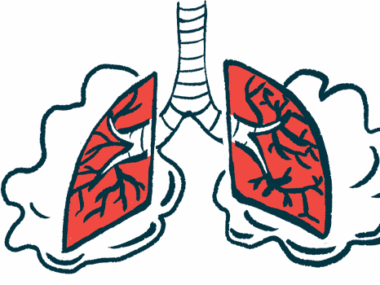Rare case of LEMS associated with cancer of the esophagus reported
Study highlights man, 50s, diagnosed with esophageal squamous cell cancer
Written by |

In rare cases, Lambert-Eaton myasthenic syndrome (LEMS) may be associated with cancer of the esophagus, the tube that carries food down to the stomach, as highlighted in a recent case study.
“This case emphasises the importance of diagnosing LEMS before tumour detection, maintaining suspicion for LEMS in atypical presentations, and thoroughly investigating for malignancies,” the researchers wrote, noting that this is the second published record of LEMS associated with esophageal cancer.
The study, “Atypical presentation of Lambert–Eaton myasthenic syndrome associated with oesophageal squamous cell carcinoma,” was published in BMJ Case Reports.
Guillain-Barré syndrome, myasthenia gravis initially suspected
In LEMS, the immune system creates antibodies that target voltage-gated calcium channels (VGCCs) found on nerve cells. VGCCs are required for the release of acetylcholine, a chemical messenger that normally triggers muscle contraction. When VGCCs are damaged, the amount of acetylcholine that’s released by nerve cells diminishes, disrupting nerve-muscle communication and causing symptoms of muscle weakness.
For up to 60% of people with LEMS, anti-VGCC antibodies are associated with an underlying cancer, most commonly small cell lung cancer (SCLC). Other types of cancer have also been linked to LEMS, but cancer of the esophagus is unusual.
Here, researchers in Moldova described the rare case of a man in his 50s in whom LEMS was found to be associated with esophageal cancer.
Initially, clinicians suspected the patient had Guillain-Barré syndrome (GBS) and then myasthenia gravis (MG), two autoimmune disorders that may also cause symptoms of muscle weakness, due to his unusual presentation. In such cases, “suspicion of LEMS should remain high, even when the presentation does not fit the classical picture, due to the chance to treat the underlying malignancy,” the researchers wrote.
The man was hospitalized for severe pneumonia and began showing signs of muscle weakness in his limbs. About a month after these symptoms started, he was unable to walk and was experiencing pain. At a neurological care center, clinicians performed a battery of tests to try to understand the causes of his symptoms.
He had low muscle tone and decreased leg tendon reflexes. Nerve conduction studies showed signs of damage in nerve cells that control movement and sensation.
“Based on all these findings, GBS remained the working diagnosis,” the researchers wrote.
In neuromuscular settings, … suspicion of LEMS should remain high, even when the presentation does not fit the classical picture, due to the chance to treat the underlying malignancy.
He was given plasma exchange treatment to remove harmful antibodies from his blood, and his symptoms eased to the point that he was able to walk with support.
Six months after his first hospitalization, the man once again needed more support to walk and started having new symptoms, including droopy eyelids (ptosis) and double vision. He also reported joint and muscle pain and drowsiness.
With further testing, his clinical team started suspecting MG, as his responses to repetitive nerve stimulation had a distinctive pattern often seen in the condition. While some of his symptoms were consistent with a diagnosis of MG, blood tests came back negative for the two major types of self-reactive antibodies seen in people with the disease. A CT scan also did not reveal the presence of SCLC or other abnormalities typically associated with LEMS.
He was given plasma exchange therapy, as well as pyridostigmine (sold as Mestinon, also available as generics), a therapy that increases the amount of acetylcholine available to muscles, and the corticosteroid prednisolone.
“In [two] weeks, the patient’s condition improved, the ptosis regressed, his muscle strength increased in both the limbs and cervical region, the general fatigue reduced, and he could walk with assistance,” the researchers wrote.
But after another six months, his condition worsened further, and he started having difficulty swallowing, speaking, and breathing. This time, plasma exchange therapy did not have a positive effect.
In a new CT scan, clinicians found a mass between his lungs, and after additional testing, he was diagnosed with squamous cell esophageal cancer. He also had elevated levels of anti-VGCC antibodies, which confirmed the diagnosis of LEMS. A month later, after palliative care, he died from advanced cancer.
While rare, LEMS can be associated with non-SCLC malignancies
LEMS and other conditions associated with cancer “present a rare opportunity for early treatment in conditions with otherwise poor prognoses,” according to the research team. They emphasized that in atypical cases such as this one, clinicians should continue to be suspicious of LEMS even when initial observations point elsewhere.
The team identified one other published case of LEMS associated with esophageal squamous cell cancer, also in a patient initially suspected of having GBS.
LEMS is increasingly being associated with malignancies other than SCLC, but these cases remain rare. When SCLC isn’t identified, diagnostic guidelines recommend a PET/CT scan to look for other cancers that could be associated with LEMS. However, “easy access to this test remains a challenge in resource-limited settings,” the researchers noted.







